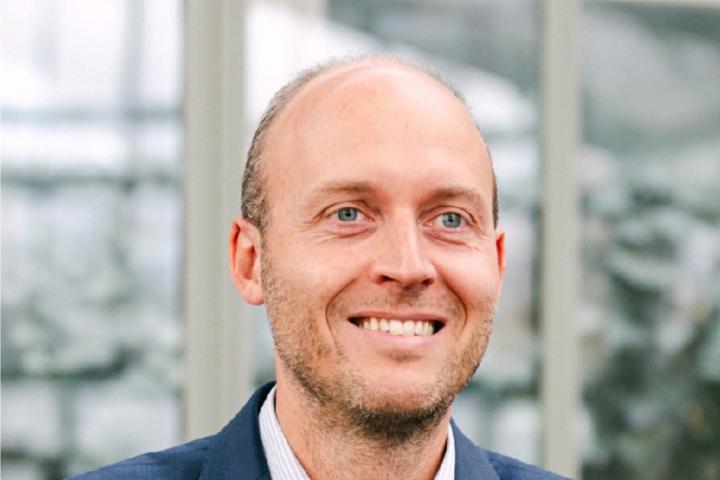
Belgium’s impact investing sector has plenty of untapped potential, says Pierre Harkay, CEO of Impact Finance Belgium. From dormant accounts to blended capital strategies, Harkay sees multiple ways to diversify funding for social and environmental projects and bring more non-commercial players into the fold.
Whether it is sustainable agriculture or affordable housing, impact investing focuses on financing new projects that offer concrete solutions to social or ecological challenges, with measurable outcomes. Because such projects often come with financial uncertainty, Harkay stresses the importance of de-risking institutional investments through the involvement of alternative capital sources.
Harkay, an economist, has led Impact Finance Belgium (IFB) since late 2023. The organization counts more than 50 members, including private funds, banks, foundations, insurers, and public investors.
Blended finance to share risk and impact
One of the most promising approaches is blended finance, where public institutions, foundations, family offices, and institutional investors pool resources. By investing together, they share the risk while aiming for both financial returns and measurable social value.
Theoretically, many sources of untapped capital exist, ranging from lottery funds to union pension assets and sovereign wealth capital. “As a sector platform, we are working to encourage more financial innovation in Belgium. Our neighboring countries are much further ahead,” Harkay said.
Learning from the Netherlands and other markets
He points to the Dutch Doen Foundation as a leading example. Each year, the foundation supports an average of 250 green, social, or creative projects, as well as over 700 community initiatives. It receives 30 million euros annually from the Dutch Postcode Lottery (23 million euros) and the Friends Lottery (7 million euros).
Support flows through two channels. First, via direct grants and loans funded by the lottery income. Second, through equity and convertible loans from Doen Participaties, a venture capital fund. Doen Participaties is a revolving fund, meaning that all returns from interest, dividends, and exits are reinvested into new sustainable and social startups.
Another example is the SDG Loan Fund, a one-billion-dollar fund that provides loans to support sustainable development in emerging markets. Investors include Allianz Global Investors, the Dutch development bank FMO, Sweden’s Skandia, and the MacArthur Foundation. FMO assumes the first-loss position, while MacArthur offers a partially unsecured guarantee.
The perception that emerging market investing carries heightened risk often does not match actual risk levels. That perception can discourage institutional investors, Allianz stated at the launch of the fund in 2023. Blended finance is an innovative tool to accelerate capital allocation to these areas at scale.
Unlocking dormant accounts
IFB has also long advocated for tapping into more than 700 million euros in dormant accounts in Belgium. These funds are currently held by the government, having gone unclaimed for years. Harkay suggests that this capital could either be invested directly or used as a form of guarantee to support impact initiatives.
Here too, the United Kingdom offers a working model. Since 2011, British impact investor Better Society Capital (BSC) has received around 425 million pounds from dormant accounts, supplemented by 200 million pounds from four banks, including Barclays and HSBC.
In June, the UK government announced it would release an additional 440 million pounds through the Dormant Assets Scheme Strategy. The funds will support youth programs, local charities, and emergency lending for low-income households in England. Distributions will be channeled through community wealth funds, with participation from financial institutions including J.P. Morgan, Schroders, and abrdn.
Retirement savings with social impact
France, meanwhile, offers a regulatory example. Since the Fabius Law of 2001, French employers are required to offer at least one 90/10 pension fund option. In these funds, up to 10 percent of assets are allocated to impact investments. The French refer to this model as la finance solidaire.
That French model could inspire something similar in Belgium, without needing to mandate it through legislation, Harkay says. The key point is that there are many levers available to expand the impact investment market. Our neighbors have shown what’s possible.
IFB’s long-term ambition is to raise impact finance to 10 percent of total Belgian assets under management by 2030, up from just a few percent today.
Connecting sustainable and impact investing
Another area of focus for IFB is better integrating impact investing and sustainable investing, which often overlap in practice. Wind farms were once considered impact investments. Now they are classified as sustainable investments, Harkay notes.
IFB fully acknowledges the complementary role of sustainable investing alongside impact investing. Both strategies are vital to meet the financing needs of the social and ecological transition. They also help strengthen Europe’s geopolitical autonomy and the resilience of our economy. These are highly relevant themes right now.
This article was originally published on InvestmentOfficer.be.